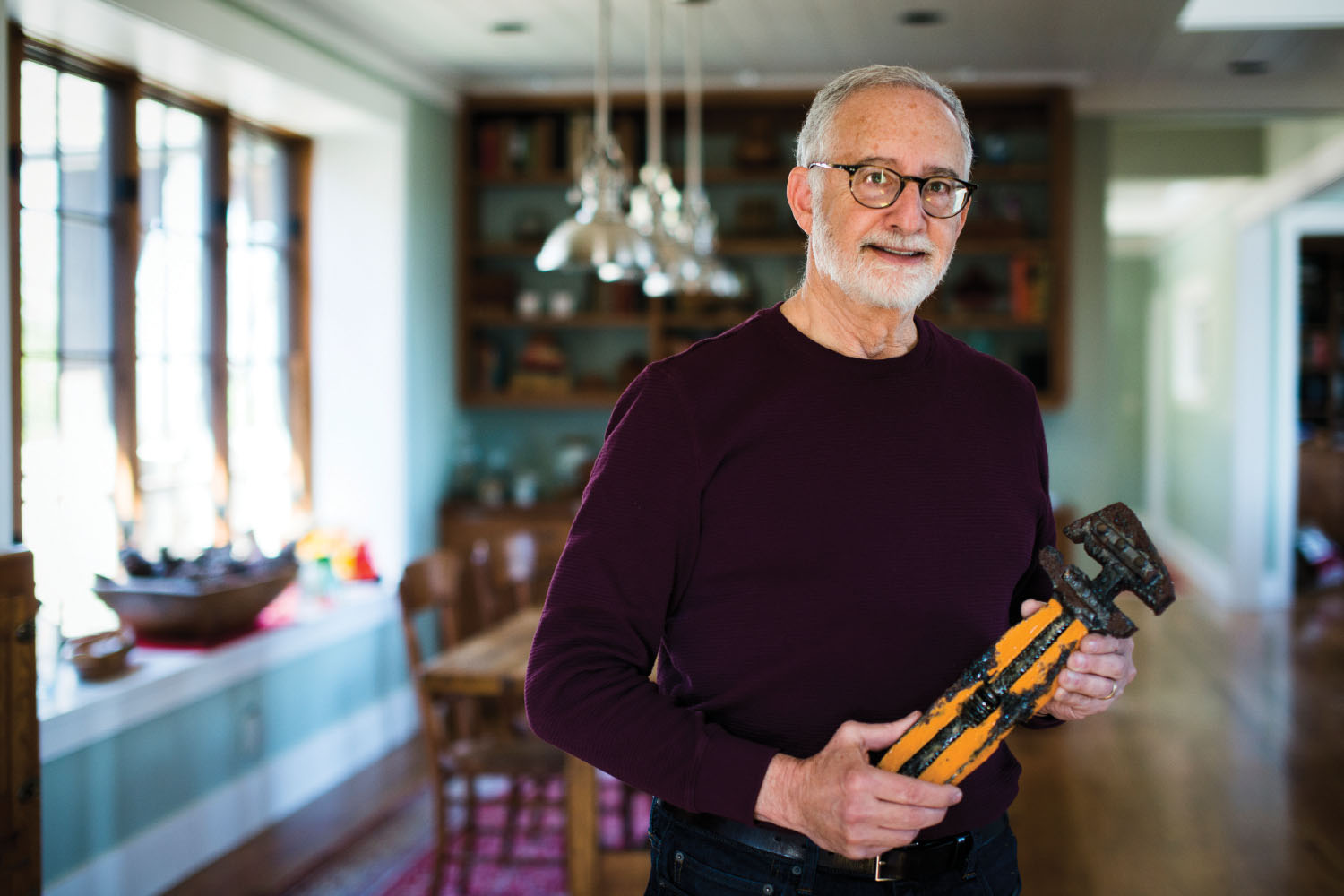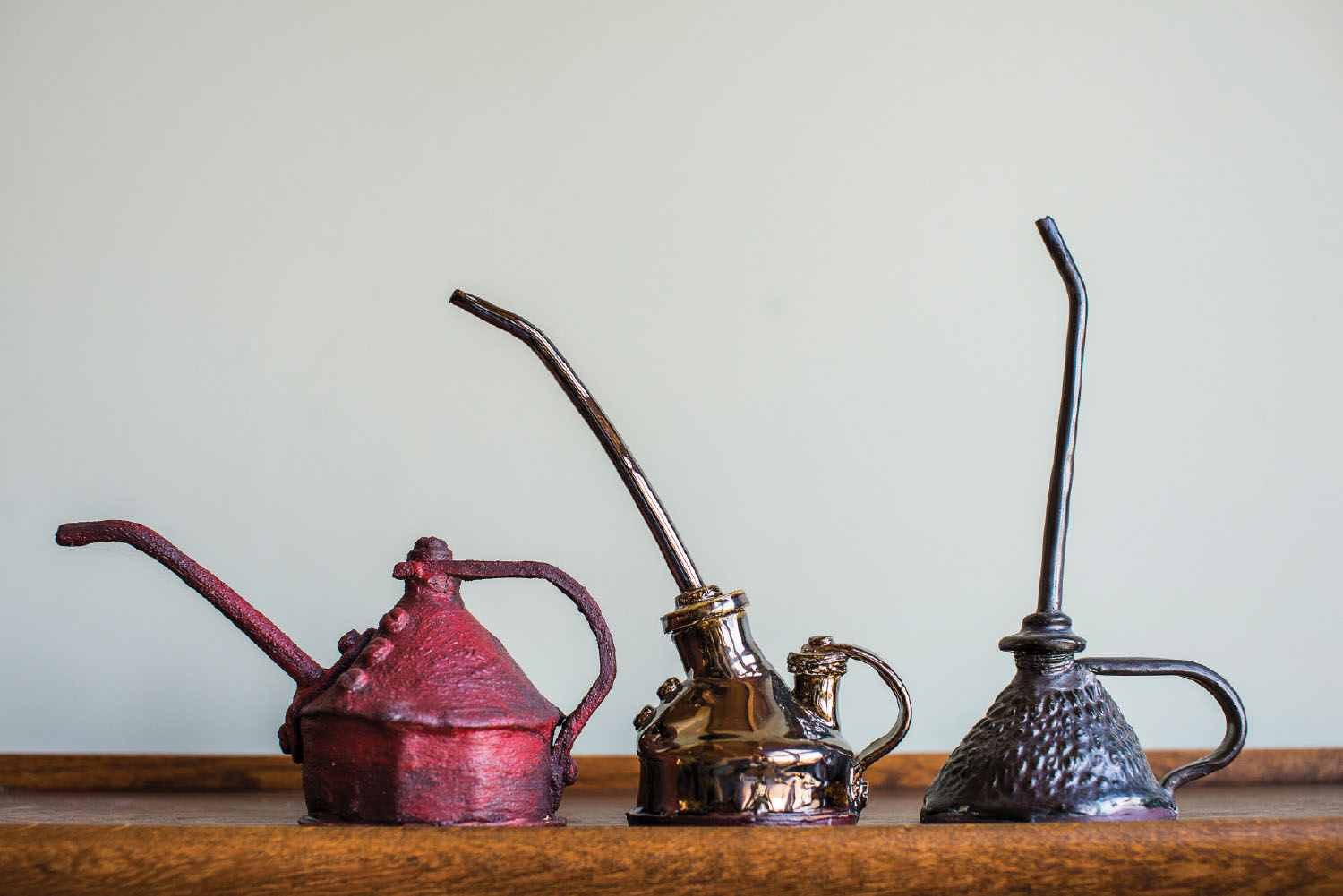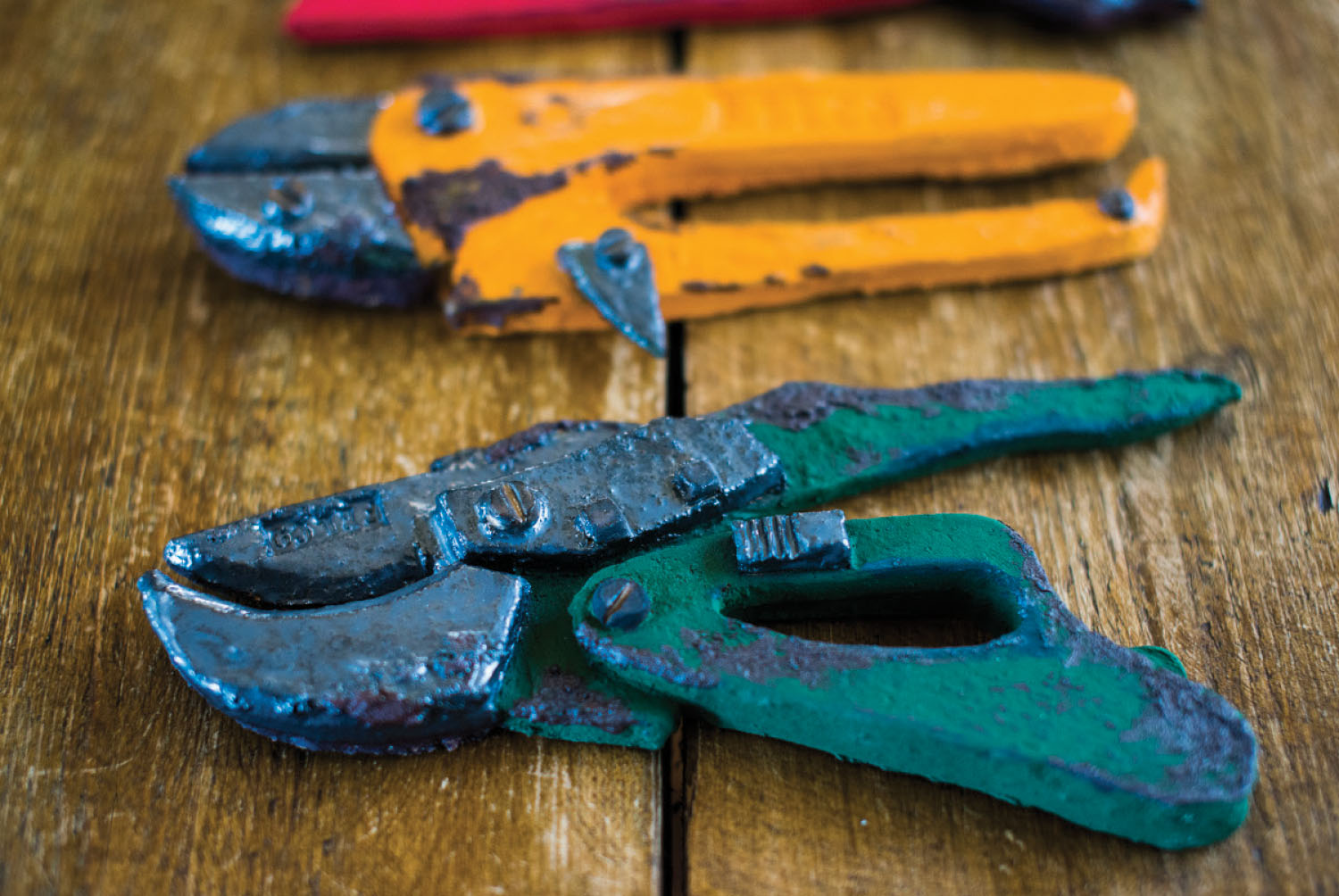
Photo by Karin Strickland
Dr. Paul M. Silverman’s house is full of the tools he remembers in his father’s basement. Rusty and worn wrenches of all shapes and sizes, old oil cans, and woodworking planes are stacked lovingly in neat lines on their shelves. Handles seem to shine with decades of wear, rust blooms, and paint appears burnished with age.
But these are not his father’s heirlooms. They are very new, formed by Silverman himself from slabs of clay, with surfaces crafted from layers of glazes, burnished by hand, and sandblasted to recreate lifetimes of use.

The celebrated cancer physician (and survivor) and professor of academic medicine has spent his whole life cultivating a keen eye. Throughout his career as a diagnostic radiologist, he trained himself to quickly see the smallest lesion and teach others how to do the same. Now in semi retirement — though he still teaches courses in oncologic imaging — Silverman is drawn to machines that have been used over many years, a sharp turn away from his fast-paced career of screens and deadlines.
When he and his wife moved to Asheville, they became enthralled by the working artists whose studios they visited. Silverman began by taking photos of surfaces he found interesting and then going home and trying to recreate them. He took classes at Village Potters, Odyssey ClayWorks, and Penland School of Crafts.

But in some ways, Silverman feels his subjects found him. An avid antiquer, he had long been interested in how surfaces wear, bit by bit, over time. He was fascinated by the many forms and surfaces that antique irons demonstrated. Patches of rust, worn paint, and patterns of use drew his attention and reminded him of his father. Could he recreate them while retaining a sense of authenticity? And then, one night at Penland, he walked past someone selling old woodworking planes. It seemed almost like fate.
When he talks about his surfaces, Silverman can barely contain his excitement. Each object he creates “shows where someone touched it and how someone used it,” he says. “Like someone’s face shows how much they smiled or how much they frowned, it was important for me to get to where the wear was.”
He delights in process and discovery, just as he did in his career in medicine — but he also revels in the differences in these pursuits. His tools are sculptural, not functional. So he can take his time making them, and the outcome isn’t a life-or-death matter. “Finally, I [can] actually sit and think about something … and make a mistake. In medicine, everything is urgent, and you are never allowed to make a mistake. Whereas in art, sometimes a mistake can lead you down a whole different path and be very rewarding.”

Paul M. Silverman, MD, West Asheville. To learn more, e-mail pmsilvermanmd@gmail.com.